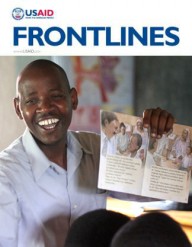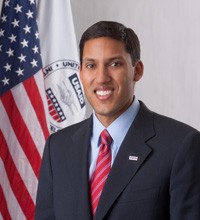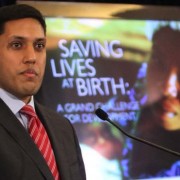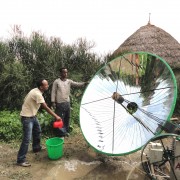A few years ago, a high school student from Richardson, Texas, set about solving a challenge that has plagued health workers and government leaders for decades in Bangladesh. Arsenic—a naturally occurring contaminant—is poisoning the water supply of as many as 77 million people in the country and is responsible for one in five deaths.
With a bucket from Home Depot, nanoparticles of rust and some sand, Thabit Pulak built an affordable tool to not only test the quality of drinking water for arsenic, but actually remove it from the water supply. More importantly, Pulak’s design costs just a fraction of the expense of common arsenic test kits. And today, he plans to bring his lifesaving tool to the global market.
Pulak is just one of the countless innovators transforming the face of development. By partnering with these entrepreneurs, we are advancing a new model of development that connects the world’s brightest problem solvers to our biggest challenges.
In the last four years, we have launched five Grand Challenges for Development grant competitions to generate breakthrough solutions to issues like water scarcity and childhood illiteracy—with half of the submissions coming from the developing world. In fact, just a few months ago, The New York Times covered the story on its front page of one of our winners—an Argentinean auto mechanic who, with no medical training, designed a device that makes it safer and easier to deliver a baby.
Through President Barack Obama’s Power Africa initiative, we’re securing partnerships with multinational companies and local entrepreneurs to remove the single greatest barrier to growth on the continent: access to energy. Less than a year since launching, we have either financially closed or planned nearly 8,000 megawatts of power projects—putting us more than halfway towards our goal of expanding electricity to 20 million homes and businesses. That means that the power won’t go out in the middle of surgery, businesses won’t have to close their doors at sundown, and children will have a light to read by.
Designed to find and scale cost-efficient solutions, our Development Innovation Ventures Fund has invested in at least 88 ideas across 29 countries—from mobile technologies that boost hospital efficiency to a $10 device that prevents the leading cause of maternal mortality.
But perhaps most exciting is the recent launch of our U.S. Global Development Lab—a historic investment in the power of science and technology to bend the curve of development. It will generate, test and scale breakthrough solutions to complex development challenges, while attracting private sector investment to improve the sustainability of our efforts.
We’re working with people like Navyn Salem, the founder of Edesia—an organization that produces ready-to-eat, nutrition-packed food that is saving lives from Somalia to Syria. Today, Edesia is reaching nearly 2 million children in 44 countries and creating 65 jobs here at home. We’re also working with Ashifi Gogo, CEO and founder of Sproxil, a mobile technology company that combats the $200 billion counterfeit pharmaceutical industry. Today, its mobile system has been used on over 100 million products and by more than 2 million customers—with potential applications in a range of industries.
And we are partnering with many more innovators like them. All told, our Agency’s open competitions have received more than 6,000 applicants—and nearly 70 percent of them have never worked with us before. They are creating innovations that are saving lives, reducing costs and strengthening the world’s most vulnerable communities in ways we could have never imagined.
From universities to refugee camps, from Nairobi to San Antonio, we’ve seen that ingenuity and good ideas are universal. As our Agency responds to the world’s most pressing crises, we will continue to have our eye on the future—and empower the innovators who will shape it.













Comment
Make a general inquiry or suggest an improvement.